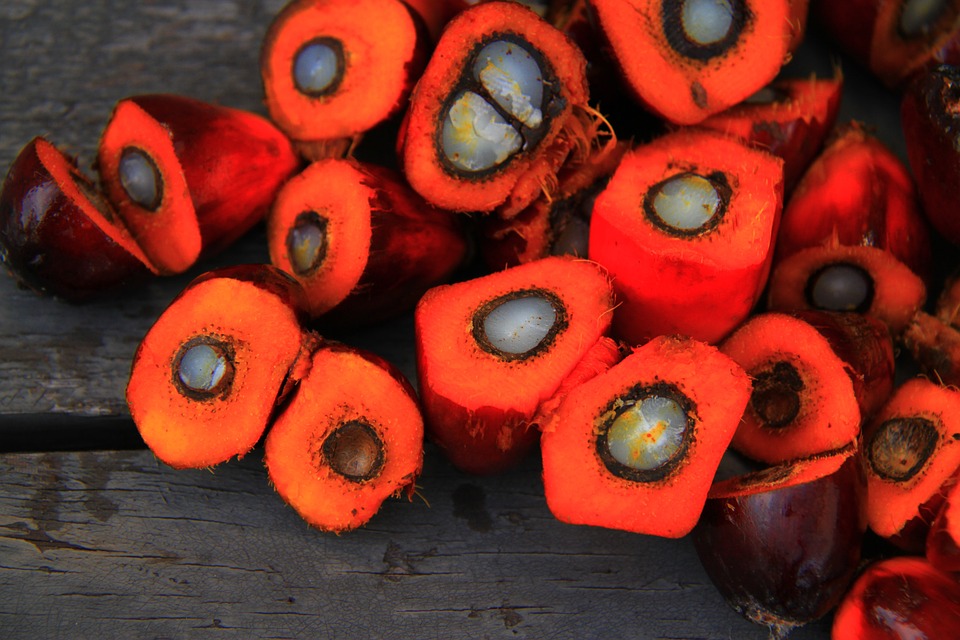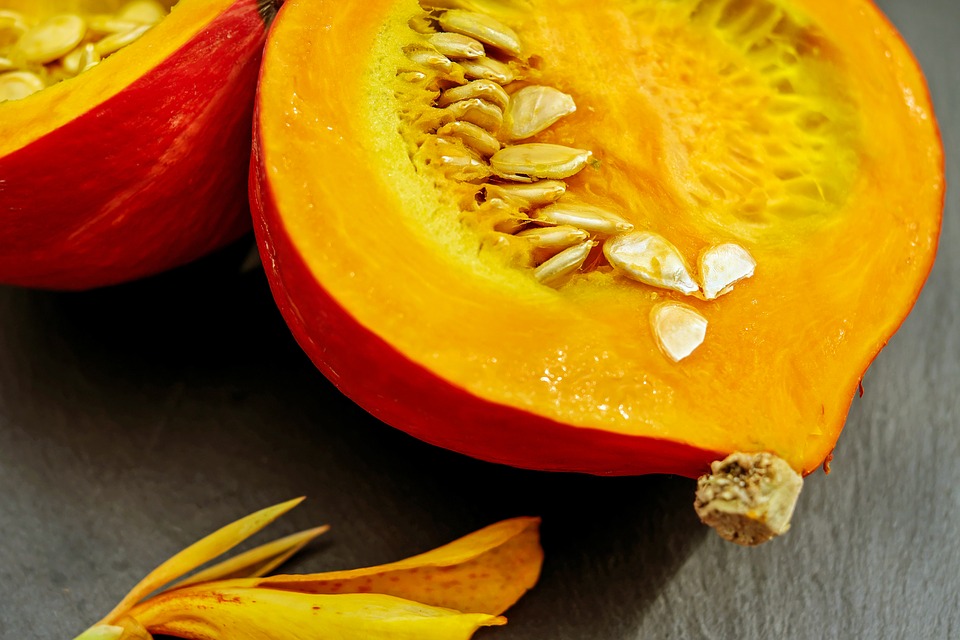Disclosure: This article may contain affiliate links. If you decide to make a purchase, I may make a small commission at no extra cost to you.

When it comes to vitamins and hair loss, vitamin E rarely ever gets a mention. Despite the fact that previous research in humans have shown that tocotrienol formulations can support hair growth and slow down hair loss in humans within just a few months of taking tocotrienol supplements.
Anecdotally, I know of people who have had some success using tocotrienol supplements for their hair loss.
In this post I’ll look at several things:
- What are tocotrienols?
- How tocotrienols can help you regrow your hair
- Studies looking at the effect of hair growth in humans
- Which are the main dietary sources of tocotrienols
- Should you supplement
- Potential side effects and benefits of taking mixed tocotrienols.
What are tocotrienols?
Tocotrienols belong to the vitamin E family, but they occur in nature at very low levels compared to other forms of Vitamin E. So if you’re not eating a few specific foods which contain this form of vitamin E, then you’re probably missing out on the benefits it can offer.
The most common type of vitamin E that you will likely consume in your diet or through supplements is tocopherols. And while these possess powerful antioxidant effects when consumed, they are no match for tocotrienols, which have a unique structure making them more efficient in the body at mopping up free radicals to prevent damage.
alpha-tocotrienol has been found to be between 40- to 60-fold more potent than alpha-tocopherol in protecting against lipid peroxidation.
There are four different types of tocotrienols which can be found in the diet:
- Alpha-tocotrienol
- Beta-tocotrienol
- Delta-tocotrienol
- Gamma-tocotrienol
How can tocotrienol benefit hair growth?
As already mentioned, due to the chemical structure of tocotrienols, they are able to provide unique benefits that other forms of vitamin E cannot (at least to the same degree). Tocotrienols are unsaturated and lipophilic, which means they can effectively penetrate into tissues which have fatty layers, such as the skin, where the hair follicle is found. [1].
Research has shown that tocotrienols are effective in protecting the skin against the damaging effects of UV Rays.
Tocotrienols are able to block inflammatory signaling of NF-kappa-B and STAT, and therefore can block the inflammatory process which is triggered by DHT in men who suffer from hair loss.
Due to the fact that tocotrienols are able to suppress lipid peroxidation, suppress inflammation, and have good penetration into tissues, means that it would be a suitable candidate for hair loss prevention.
So let’s look at what the research says about vitamin E supplementation and hair loss.
Effect of tocotrienol in men with hair loss
In 2010, a paper was published looking at the effect of tocotrienols and hair loss in volunteers. The study went on for 8 months and it was a double-blind, placebo-controlled study (the gold standard in research).
21 volunteers were selected to take the tocotrienol supplement
17 were selected to be part of the placebo group (dummy pill).
What was in the capsule?
In total, the capsule contained 50 mg of mixed tocotrienols
- 30.8% alpha-tocotrienol
- 56.4% gamma-tocotrienol
- 12.8% delta -tocotrienol
- 23 IU of alpha-tocopherol
They took the supplement twice daily after they ate a meal.
As you can see in the table, the number of hairs was significantly increased in the treatment group compared to the group who took the placebo.
By the end of the study, the number of hairs increased by 34%! in the tocotrienol group. In the placebo, it remained the same as it was at baseline.
Other important highlights of the study:
- 8 people in the treatment group (40%) had an increase in hair count of more than 50%
- 1 person (5%) had an increase of 25% to 50%
- 9 people in the treatment group (45%) had increases of up to 25%
- 1 volunteer (5%) had an increase of just 10%
- 1 person (5%) had a slight decrease of 10% of hairs in the treatment group
- Almost half of the placebo group had a decrease in the number of hairs by the end of the study
If you want to read the full paper which was published, you can go here.
In a more recent study puslished at the end of 2017, researchers looked at the effect of vitamin E (tocotrienols) on hair follicle regeneration and found that the anagen (growth phase) was accelerated and helped induce folliculogenesis.
What are the main dietary sources of tocotrienols?
There are many plant sources of tocotrienols, but they only contain small amounts.
Tocotrienols in vegetable oils
- Palm oil (940 mg per kg)
- Rice bran oil (465 mg per kg)
- Olive oil
- Flaxseed oil
- Grape Fruit seed oil
- Poppy seed oil
- Sunflower oil
Tocotrienols in foods
- Oats
- Buckthorn Berry
- Rye
- Wheat
- Barley
- Annatto seed
- Walnuts
- Amaranth
You can find out much each oil and food have in this paper.
Should you supplement?
To get the equivalent amount of tocotrienols as was used in the study (100 mg in total per day) through diet, you would need to eat a lot of these foods. So much in fact, that you would be in serious caloric excess.
The only way to achieve the kind of dose that was achieved in the tocotrienol hair loss study is to use supplements which contain this form of Vitamin E.
Of course, one should try to always get their vitamins and minerals from food before supplementing, but in this case, due to the minuscule amounts of tocotrienols in the diet, it’s almost impossible.
There are many different sources of tocotrienols, so you can take your pick. But you should find a supplement which contains a mix of all of them. There are many out there which only contain one or two in any significant amounts.
I recommend checking out this tocotrienol supplement.
The supplement contains:
Vitamin E from red palm oil extract – Tocotrienols – 160 mg
Also contains Vitamin A, alpha, beta-carotene, lycopene, and coenzyme Q10.
These additional ingredients are also known to support hair growth.
Are there any side effects?
On the supplement, they recommend that you should speak to your doctor if you are taking the following medications: warfarin, diclofenac, phenytoin, indomethacin. Palm fruit can inhibit the CYP2C9 enzyme, which is involved in the metabolism of these medications.
Other than that, the tocotrienols have been proven to have an excellent safety record in high doses of 1000 mg/day in healthy humans. [4].
In conclusion
Tocotrienols are yet just another natural vitamin which can assist in hair growth and be part of our hair loss prevention strategy. Of course, no vitamin or drug is usually a magic cure-all by itself but using an evidence-based approach to the treatment of hair loss through the use of natural remedies is a good alternative for people who want to avoid long-term use of medications.
If you have any questions about using Vitamin E (tocotrienols) and hair loss, please leave a comment below! 🙂 Happy hair growing!
References
1. Pharmacological potential of tocotrienols: a review
2. Effects of Tocotrienol Supplementation on Hair Growth in Human Volunteers
https://www.ncbi.nlm.nih.gov/pmc/articles/PMC3819075/
3. A review of characterization of tocotrienols from plant oils and foods
https://www.ncbi.nlm.nih.gov/pmc/articles/PMC4392014/
4. Evaluation of Pharmacokinetics, and Bioavailability of Higher Doses of Tocotrienols in Healthy Fed Humans
https://www.ncbi.nlm.nih.gov/pubmed/27493840
5. Epidermal E-Cadherin Dependent β-Catenin Pathway Is Phytochemical Inducible and Accelerates Anagen Hair Cycling.






No Comments